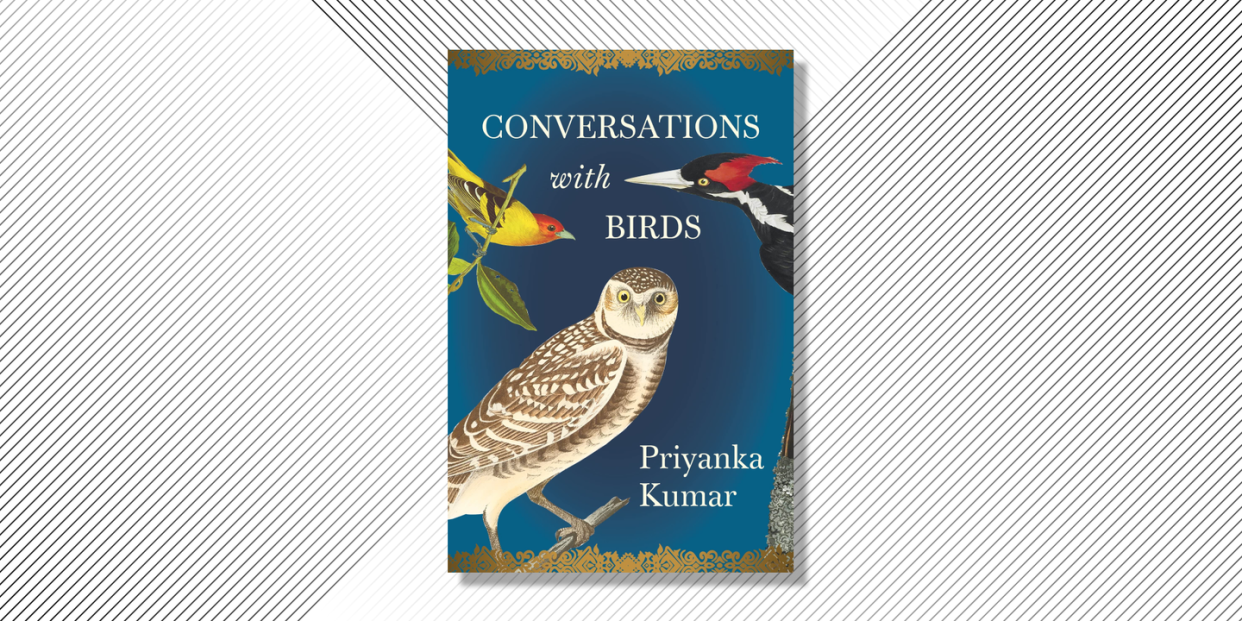Read This Essay from “Conversations with Birds,” by Priyanka Kumar

About a month after Thanksgiving, on a cloud-filled December morning, I took Michael, my husband, on a surprise birthday hike. We headed to the Elkhorn Slough, a tidal salt marsh and estuarine research reserve some 26 miles south of Santa Cruz. On this first visit to the slough, a mass of ashen clouds loomed over us. What beauty the Elkhorn Slough might be said to have is of a stark, blanched variety. I zipped up my navy windbreaker as we walked up to the base of a sprawling, charcoal rock.
We were surveying the tidal mudflats below when an elderly man and a woman approached us. They were volunteers, armed with battered copies of the National Geographic Field Guide to the Birds of North America.
“Would you two be interested in going on a bird walk?”
We had never been on a bird walk before, but their aquatic eyes shone with such hope that I didn’t care to disappoint them. I hardly realized in this moment that my way of looking at the natural world was about to undergo a seismic shift.
They led us down to the salt marsh and the four of us walked along a dirt path, skirting past gleaming pickleweed that sprouted from the ground like succulent seaweed. We began to circle the metallic-blue lagoon. Here we spotted a few tawny shorebirds. The volunteers shuffled through the worn pages of their guidebook and pointed out the name and illustration of each bird we encountered.
Around noon, I noticed a shorebird that was enormous compared to the rest. If the plight of the diminutive snowy plovers had ushered me into the domain of shorebirds, I now faced a bird who, at roughly two feet tall, was a monad of shorebirds. I was told that this solitary bird, foraging scrupulously along the edge of the blue-gray water, was a long-billed curlew, Numenius americanus.
Intrigued, I stayed back to observe it while the others walked on. I took in the slender lines of the curlew’s neck and its marbled beige-and-umber back. I stared at its impossibly long bill, flesh-colored on top and chocolate brown at the tip. Essentially the largest sandpiper in the country, the bird was half as tall as a crane, but without the crane’s assured elegance. With its absurdly elongated, curved bill, the curlew looked almost unwieldy, like a pointer to another era, to the kinds of feathered creatures that might have existed in the time of dinosaurs. This bird angles its protracted bill into the burrows of mud crabs and maneuvers its prey to the surface to feed on it. In retrospect I must have seen a female, which in this species is bulkier and has a lengthier bill than the male.
The curlew was wholly at ease. The bird’s unhurried pace combined with its focus and laser-sharp moves when it found an invertebrate to eat was nothing short of arresting. I might have been watching a Zen monk at work. Here was a bird that embodied Milarepa’s saying: Hasten slowly and you shall soon arrive.
Observing the long-billed curlew, I thought about how my Neary Lagoon walks were taken in a similarly languid mood, and were bookended by writing or teaching sessions during which I pecked away at words in the monkish, meditative way in which the curlew probed the water for crustaceans. Weaving daily along the glittering lagoon, I had come to experience a measure of contentment while watching the wood ducks and my isolation was somewhat allayed. Now my chance initiation into the life of this exquisite curlew and my hunger to know more about the bird was like a bridge that would one day lead me back to nature’s elusive womb.
Contrary to the mythology about Eve, nature doesn’t cast us out. Eating from the tree of knowledge, the knowledge of nature’s inner working, far from being a sin, only deepens our filial love for the Earth. I can’t say how much time passed.
The sun blazed through the clouds and time melted like the haze. I came to myself when, out of the corner of my eye, I spotted a crab racing toward me, with the dreadful passion of a soldier on a battlefield. I had been immobile long enough that the crab had evidently decided I was fair game. I darted out of the crab’s warpath and left the indelible curlew behind.
From Conversations with Birds, by Priyanka Kumar (Minneapolis: Milkweed Editions, 2022). Copyright © 2022 by Priyanka Kumar. Reprinted with permission from Milkweed Editions. milkweed.org
You Might Also Like

